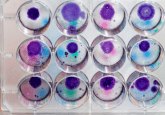3D-printed vaccine patches may lead to higher vaccination rates

A 3D-printed ‘vaccine patch’ developed by scientists at Stanford University (CA, USA) and the University of North Carolina at Chapel Hill (UNC Chapel Hill, NC, USA) may offer an alternative vaccination option to a typical shot. The breakthrough technology involves 3D-printed microneedles arranged on a polymer patch, just long enough to reach the skin and deliver the vaccine. While microneedles have been utilized as a method of therapeutic delivery in the past, their adaptation to different vaccine types is difficult. Most microneedle vaccines utilize master templates to create molds, but their molding is not very versatile and may lead to reduced needle sharpness during replication. ...





